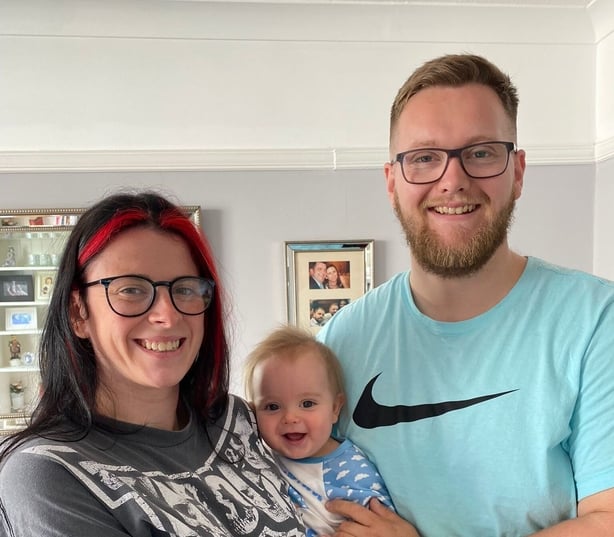Families of loved ones who died from sepsis have called on the Government to double down on efforts to increase awareness of the illness.
Almost 3,000 people die in Irish public hospitals from sepsis each year. That is one in five patients who have a sepsis diagnosis.
In advance of World Sepsis Day tomorrow, there has been a call for mandatory sepsis protocols in all hospitals, and 20% of deaths worldwide and in Ireland are related to a sepsis infection.
However awareness of the signs and symptoms remain very low.
Health Service Executive figures for 2021 show over 13,300 patients were treated for sepsis in public hospitals. Of these, 2,700 died. This compares to 1,750 deaths in 2012 when 8,000 inpatients were diagnosed with the illness.
What is Sepsis?
"Sepsis is the sudden overwhelming reaction of the body to a bloodstream infection," said Steve Kerrigan, professor of Precision Therapeutics at the School of Pharmacy and Biomolecular Sciences at the Royal College of Surgeons in Ireland (RCSI).
"If a bacteria or any other pathogen such as a fungus or virus gets into the bloodstream it causes serious dis-regulation of the cardiovascular system," he said.
If left untreated, sepsis can take a life within 12-24 hours.
"It depends on how quickly a patient can get to hospital," said Prof Kerrigan who has been researching the illness for 25 years.
"Statistics show that for every hour delay in treatment there’s an 8% increased chance of mortality."
In 2018, a survey carried out by the RCSI with the Behaviour and Attitudes polling company, found just 28% of Irish people could define sepsis. After an RSCI-led awareness campaign this increased to 36%.
But not knowing what to look for remains a huge problem.
"I had a fever of about 40.5C," said Lizzy Ryan from Portmarnock recalling the events of August 2022 when she developed sepsis while 31 weeks pregnant.

"I can remember the pain, just feeling that I was going to die," she told RTÉ's News At One.
Her son Louis was delivered prematurely and Ms Ryan feared she would lose him.
"When I was told I had to have an emergency C-section I begged them that if something went wrong in the operating room - and they had to make a choice - that they would help the baby and leave me."
Ms Ryan said before she was diagnosed she and her peers knew nothing about sepsis.
"When I told my friends they didn't know what I was talking about. They all had to look it up or wait for me to come out of hospital to tell them about it."
The HSE’s clinical lead for the National Clinical Programme on Sepsis, Dr Michael O’ Dwyer, said sepsis is "overwhelmingly a disease of the elderly," with most cases of infection and death occurring in those over 75.
He said symptoms include low blood pressure, blue, pale or blotchy skin, or a rash that does not fade when you roll a glass over it. People should also be concerned if a person is hard to wake, slurring their speech, or cold to the touch.
Dr O'Dwyer said symptoms to look out for in children or babies include rapid breathing, not feeding properly, or not peeing.
Sepsis can occur at any age.
"My sister's name was Tracey Corcoran. She was 37 when she passed away. She was a mother to Sophie and William," said James Corcoran from Cork who helped found the Irish Sepsis Foundation.

Mr Corcoran said his sister did not have to die. The foundation is now working to get leaflets highlighting the symptoms of sepsis into doctors waiting rooms.
"That way there's transparency between a patient and their GP. They could then ask their doctor if this could possibly be sepsis."
One fifth of all deaths across the world are caused by sepsis infection. That is 11 million deaths resulting from 49 million annual infections.
"This is a huge number," said Prof Kerrigan. He is concerned that infections are becoming resistant to antibiotic treatment.
Prof Kerrigan is part of team at RCSI working on a non-antibiotic drug for sepsis patients.
He said 42% of all in-hospital beds in Ireland are occupied with a patient who has sepsis as part of their diagnosis.
We need your consent to load this rte-player contentWe use rte-player to manage extra content that can set cookies on your device and collect data about your activity. Please review their details and accept them to load the content.Manage Preferences
HSE figures for the past decade show sepsis numbers peaked in 2017. That year 17,000 patients who were admitted to acute public hospitals had a diagnosis of sepsis, and over 3,000 of these died.
While deaths have stabilised below 3,000 a year, the HSE admits the true numbers are likely to be higher.
"Figures we report are generated from the Hospital In-Patient Enquiry (HOPE) system, which captures data from acute public sector hospitals. Therefore, patients treated in the private sector or in the community will not be reflected in our data," a HSE spokesperson said.
The HSE also said the figures relate those with a diagnosis of sepsis made during their hospital admission.
"This does not differentiate between patients that die of sepsis as primary cause and patients that may have sepsis but die of other conditions," it said.
Next week sepsis experts will gather for a global summit at Dublin Castle.
Ciarán Staunton, whose 12-year-old son Rory died in New York in 2012, will be among the speakers. Rory developed a sepsis infection after getting a cut on his arm while playing sports.

"You went from one week when they asked us in the pizza shop what kind of pizza would you like. The following week I was in the funeral home and they were asking what kind of coffin did I want? These are preventable conversations," Mr Staunton said.
The Staunton's campaign for change led to Rory's Regulations. New York hospitals must follow mandatory sepsis protocols when patients are admitted.
"20,000 lives have been saved in New York state alone," Mr Staunton said, adding that Rory had saved more lives than any other sepsis effort globally.
The US Centers for Disease Control and Prevention (CDC) has also issued new guidance in recent weeks on how to diagnose and treat sepsis. "That's what this young man would have wanted," Mr Staunton said.
He will tell the Dublin summit that similar regulations to those in New York must be put in place here.
"The Department of Health has to pass a regulation that says all hospitals in the country must have sepsis protocols, and must produce them so that we are not burying our children," Mr Staunton.
Dr O'Dwyer said there was "a well recognised bundle of care" in place for patients. "We very much provide education and support to clinicians," he added.
But Prof Kerrigan said more Government funding is urgently needed if the HSE’s strategic plan for saving lives is to work.
"The HSE are going to run this summit, and we hope that will bring a lot of attention to ensure this strategic plan is implemented as soon as possible," Prof Kerrigan said.







